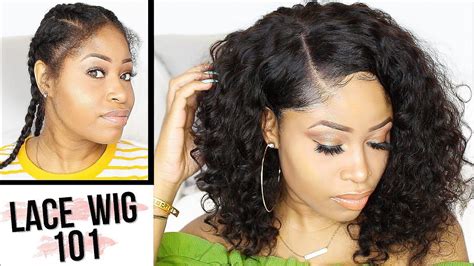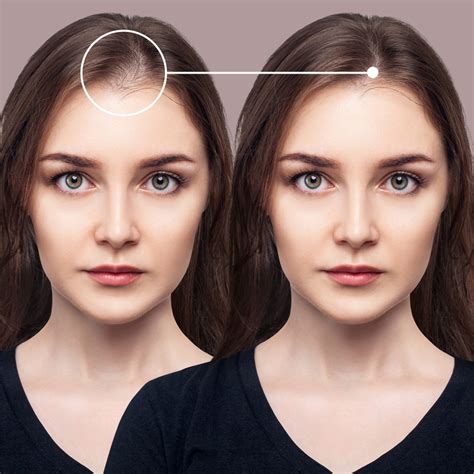Thinning hair temples is a common problem for women, and it can be frustrating and embarrassing. Due to the nature of hair growth in this area, women’s hair follicles in the temples area are particularly prone to miniaturization, which is the process by which hair follicles shrink and produce thinner hair. There are many different causes of thinning hair temples, including genetics, hormones, and stress. While it is not always possible to prevent thinning hair temples, there are a number of treatments available to help women regain their full, healthy hair.

One of the most popular treatments for thinning hair temples is hair extensions. Hair extensions can be used to add volume and length to the hair, and they can be customized to match the color and texture of your natural hair. There are a variety of different types of hair extensions available, including clip-in extensions, tape-in extensions, and fusion extensions. One of the main differences between these methods is how the extensions are attached to the natural hair. Clip-in extensions are the easiest to apply and remove, while fusion extensions are the most permanent.
Clip-in extensions are a great option for women who want to add volume and length to their hair without damaging their natural hair. Clip-in extensions are made from synthetic or human hair, and they are attached to the hair with small clips. Clip-in extensions can be applied and removed in minutes, and they can be reused multiple times.
Tape-in extensions are a more permanent type of hair extension that is applied using a medical-grade adhesive tape. Tape-in extensions are made from human hair, and they can be customized to match the color and texture of your natural hair. Tape-in extensions last for 6-8 weeks, and they can be reused multiple times.
Fusion extensions are the most permanent type of hair extension that is applied using heat. Fusion extensions are made from human hair, and they are attached to the hair with a small, heated keratin bond. Fusion extensions last for 3-6 months, and they can be reused multiple times.
In addition to hair extensions, there are a number of other treatments available for thinning hair temples. These treatments include:
- Minoxidil is a topical medication that is applied to the scalp to promote hair growth. Minoxidil is available over-the-counter, and it is effective for both men and women.
- Finasteride is a prescription medication that is taken orally to prevent hair loss. Finasteride is only effective for men.
- Hair transplantation is a surgical procedure that involves transplanting hair follicles from the back of the scalp to the temples. Hair transplantation is a permanent solution for thinning hair temples, but it is also expensive and invasive.
If you are experiencing thinning hair temples, it is important to consult with a doctor or hair loss specialist to determine the cause of the problem. Once the cause of the problem has been identified, there are a number of treatments available to help you regain your full, healthy hair.
When choosing a hair extension, there are a number of factors to consider, including:
- The type of hair The best type of hair for hair extensions is human hair. Human hair is more expensive than synthetic hair, but it is also more natural-looking and durable.
- The length of the hair The length of the hair extension should be based on your personal preference. You can choose from extensions that are short, medium, or long.
- The color of the hair The color of the hair extension should match the color of your natural hair. You can choose from extensions that are dyed, bleached, or highlighted.
- The texture of the hair The texture of the hair extension should match the texture of your natural hair. You can choose from extensions that are straight, wavy, or curly.
When using hair extensions, it is important to avoid the following common mistakes:
- Using too much hair Using too much hair can make your hair look unnatural and bulky.
- Using the wrong color Using the wrong color of hair can make your extensions look obvious.
- Using the wrong texture Using the wrong texture of hair can make your extensions look unnatural.
- Applying the extensions too tightly Applying the extensions too tightly can damage your natural hair.
- Leaving the extensions in for too long Leaving the extensions in for too long can cause your natural hair to become matted and tangled.
Hair extensions are a great way to add volume and length to your hair. However, it is important to choose the right hair extension and to apply it correctly. By following the tips in this article, you can avoid the common mistakes that many women make when using hair extensions.
- The American Academy of Dermatology
- The International Society of Hair Restoration Surgery
- The National Hair Loss Association
| Hair Extension Type | Pros | Cons |
|---|---|---|
| Clip-in extensions | Easy to apply and remove, can be reused multiple times | Can be visible if not applied correctly, can damage hair if used too often |
| Tape-in extensions | More permanent than clip-in extensions, can be customized to match the color and texture of your natural hair | Can be expensive, can damage hair if not removed properly |
| Fusion extensions | The most permanent type of hair extension, can last for 3-6 months | Can be expensive, can damage hair if not applied correctly |
| Hair transplantation | A permanent solution for thinning hair temples | Expensive, invasive, can leave scars |
| Cause of Thinning Hair Temples | Prevalence |
|---|---|
| Genetics | 50% of women will experience some degree of hair loss by the age of 50 |
| Hormones | Hormonal changes, such as those that occur during pregnancy, menopause, and thyroid problems, can cause hair loss |
| Stress | Stress can cause hair loss by triggering the release of hormones that can damage hair follicles |
| Medications | Certain medications, such as chemotherapy, can cause hair loss |
| Medical conditions | Certain medical conditions, such as alopecia areata and lupus, can cause hair loss |
| Treatment for Thinning Hair Temples | Effectiveness | Side Effects |
|---|---|---|
| Minoxidil |
